
The Walt Disney World Resort is an entertainment resort complex located about 20 miles (32 km) southwest of Orlando, Florida, United States. Opened on October 1, 1971, the resort is operated by Disney Experiences, a division of The Walt Disney Company. The property covers nearly 25,000 acres, of which half has been developed. Walt Disney World contains numerous recreational facilities designed to attract visitors for an extended stay, including four theme parks, two water parks, four golf courses, conference centers, a competitive sports complex and a shopping, dining, and entertainment complex. Additionally, there are 19 Disney-owned resort hotels and one camping resort on the property, and many other non-Disney-operated resorts on and near the property.

Epcot, stylized in all uppercase as EPCOT, is a theme park at the Walt Disney World resort in Bay Lake, Florida. It is owned and operated by The Walt Disney Company through its Disney Experiences division. The park opened on October 1, 1982 as EPCOT Center, the second of four theme parks built at the resort. Often referred to as a "permanent world's fair", Epcot is dedicated to the celebration of human achievement, particularly technological innovation and international culture.
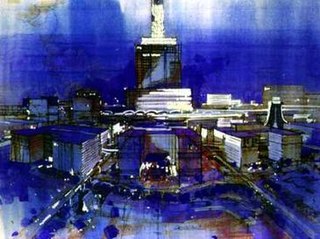
The Experimental Prototype Community of Tomorrow, shortened to EPCOT or E.P.C.O.T., was an unfinished concept for a planned community, intended to sit on a swath of undeveloped land near Orlando, Florida. It was created by Walt Disney in collaboration with the designers at Walt Disney Imagineering in the 1960s. Based on ideas stemming from modernism and futurism, and inspired by architectural literature about city planning, Disney intended EPCOT to be a utopian autocratic company town. One of the primary stated aims of EPCOT was to replace urban sprawl as the organizing force of community planning in the United States in the 1960s. Disney intended EPCOT to be a real city, and it was planned to feature commercial, residential, industrial, and recreational centers, connected by a mass multimodal transportation system, that would, he said, "Never cease to be a living blueprint of the future".

Disney Springs is an outdoor shopping, dining, and entertainment complex at the Walt Disney World Resort in Lake Buena Vista, Florida, near Orlando. First opened in 1975 as Lake Buena Vista Shopping Village, it has been expanded and rebranded over the years as Walt Disney World Village (1977), Disney Village Marketplace (1989), and Downtown Disney (1997), becoming Disney Springs in 2015. A similar complex is being developed on the opposite side of Walt Disney World called Flamingo Crossings.

Disney Transport is the public transit system of the Walt Disney World resort near Orlando, Florida, United States. It offers guests a variety of fare-free options to navigate the resort, including buses, the iconic Walt Disney World Monorail System, the Disney Skyliner gondola lift system, and watercraft. This network facilitates movement between the resort's four theme parks, its shopping district, and all Disney-owned lodging on the property. Additionally, Disney Transport operates trams, providing assistance navigating large parking lots, and the Minnie Van rideshare service, offering on-demand, point-to-point transportation.
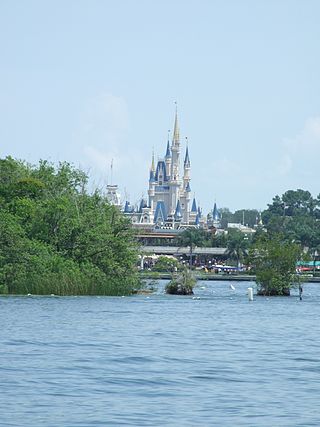
The Seven Seas Lagoon is an artificial lake at the Walt Disney World Resort in Bay Lake, Florida, near Orlando. Located south of the Magic Kingdom theme park, the Seven Seas Lagoon serves as a natural buffer between the Magic Kingdom and its parking lot and connects with the adjacent Bay Lake. The lake reaches a depth of 14 feet (4.3 m). The lagoon is used mainly for recreational boating, as well as by the resort's three Disney Transport ferryboats that transport guests between the Magic Kingdom and the Transportation and Ticket Center.

The PeopleMover is an attraction in Tomorrowland in the Magic Kingdom at the Walt Disney World Resort in Bay Lake, Florida just outside of Orlando, Florida. Designed as an urban mass-transit system of the future, vehicles take passengers on a grand circle tour of the realm of Tomorrowland that provides elevated views of several other attractions.

The Happiest Homecoming on Earth or the Happiest Celebration on Earth was the eighteen-month-long celebration of the 50th anniversary of the Disneyland theme park, which opened on July 17, 1955. It commemorated fifty years of Disney theme parks and celebrated Disneyland's milestone throughout Disney parks all over the globe. The "Homecoming" name was only used for Disneyland Resort; all the other Disney Parks resorts used the "Celebration" name.

The Disneyland Monorail is an attraction and transportation line at the Disneyland Resort in Anaheim, California, United States. It was the first daily operating monorail over all.

Test Track is a high-speed slot car thrill ride manufactured by Dynamic Attractions located in World Discovery at Epcot, a theme park at the Walt Disney World Resort in Bay Lake, Florida. The ride is a simulated excursion through the rigorous testing procedures that General Motors uses to evaluate its concept cars, culminating in a high-speed drive around the exterior of the attraction.
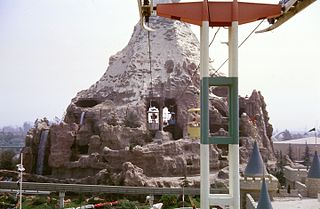
The Skyway was a gondola lift attraction at Disneyland, at the Magic Kingdom, and at Tokyo Disneyland. Since all versions of this attraction took riders back and forth between Fantasyland and Tomorrowland, the route from Tomorrowland was called Skyway to Fantasyland, and the route from Fantasyland was called Skyway to Tomorrowland.
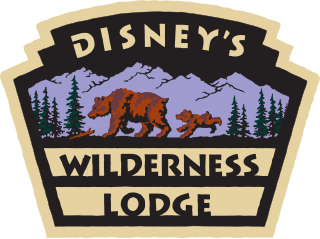
Disney's Wilderness Lodge is a resort hotel located at the Walt Disney World Resort in Lake Buena Vista, Florida. Opened on May 28, 1994, the resort is owned and operated by Disney Parks, Experiences, and Products. Disney's Wilderness Lodge is located in the Magic Kingdom Resort Area on Bay Lake. The resort is located near Disney's Fort Wilderness Resort & Campground. A similarly themed resort, Disney's Grand Californian Hotel & Spa, is located at the Disneyland Resort in California.

The Walt Disney World Railroad (WDWRR) is a 3-foot narrow-gauge heritage railroad and attraction located within the Magic Kingdom theme park of Walt Disney World in Bay Lake, Florida, in the United States. Its route is 1.5 miles (2.4 km) in length and encircles most of the park, with train stations in three different park areas. The rail line, constructed by WED Enterprises, operates with four historic steam locomotives originally built by Baldwin Locomotive Works (BLW) in Philadelphia, Pennsylvania. It takes about 20 minutes for each train to complete a round trip on the WDWRR's main line loop. On a typical day, the railroad has two trains in operation; on busy days, it has three trains.

The Mark IV monorail (Mk4) was a straddle-type monorail train built for the Walt Disney World Monorail System. The design was developed by Disney Imagineer Bob Gurr. Ten trains were built by Martin Marietta in 1969 at the cost of about $7 million USD each and they were used on the monorail system between 1971 and 1989 before being replaced by the Mark VI monorail, although a few lasted until 1991.

The Mark VI monorail (Mk6) is a monorail train used in the Walt Disney World Monorail System and the Las Vegas Monorail. The Mark VI started replacing the Mark IV monorails at Walt Disney World in 1989, replacing the final Mark IV by 1991. The Mark VI later replaced the two ex-WDW Mark IV monorail sets of the Las Vegas Monorail in 2004. The Las Vegas M-VI versions of the trains differ from the Walt Disney World trains in physical appearance and the fact that they are automated, a trait the Walt Disney World monorails lacked until their automation starting in 2014.

Space Mountain is an outer space-themed, indoor roller coaster in Tomorrowland located at Walt Disney World's Magic Kingdom theme park in Bay Lake, Florida, near Orlando. The dark ride, which opened on January 15, 1975, is the original version of the iconic attraction that has since been replicated at other Disney theme park locations worldwide, with the exception of Shanghai Disneyland Resort. Space Mountain is one of the first computer operated roller coasters and is also the oldest operating roller coaster in the state of Florida.
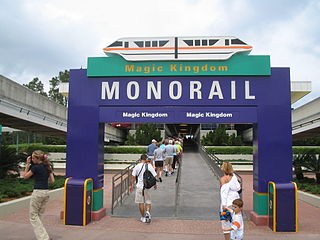
The Transportation and Ticket Center (TTC) is an intermodal transportation hub served by monorails, ferries, and buses at the Walt Disney World Resort. The station serves all three lines of the Walt Disney World Monorail System, as well as conventional bus and taxis in the Greater Orlando Region.

Ahmad Jafari is an architect based in USA whose career began in the 1960s. He was with Disney Imagineering as an Architect and Art Director from 1966 to 2004 and has worked alongside Walt Disney and many Disney Legends. In 2006, he received the NFFC Disney Legend awards.
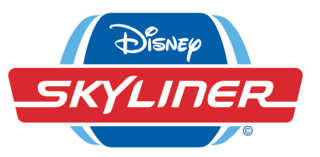
The Disney Skyliner is a gondola lift system, part of the Disney Transport system, that opened on September 29, 2019, at the Walt Disney World Resort in Bay Lake, Florida. The system is composed of five stations that service four resorts and two theme parks, with a fleet of over 250 gondola cabins that can accommodate up to ten guests per cabin, or up to six with an open wheelchair or other mobility device. Guests sit on twin, inward-facing, wooden benches.


































